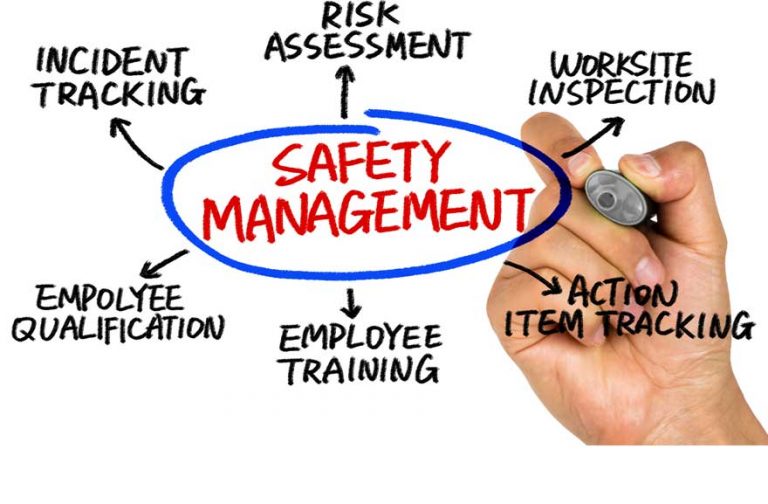Search
The Chittagong Explosion – and Hydrogen Peroxide

Some of you may remember our Process Safety Dispatch article written seven months ago concerning the massive explosion that shook Beirut port when industrial quantities of ammonium nitrate, a Class 5, Division 5.1 oxidizing substance, destroyed the heart of Beirut.
Here we go again….
Whether or not you’re involved in process safety, you’ll certainly have heard of the massive explosion that took place at a container depot just outside Chittagong, Bangladesh on Saturday 4th June 2022. It is understood that a fire developed in shipping containers holding clothes destined for western markets. The fire ultimately led to a massive explosion resulting in the deaths of over 50 individuals. Hundreds were taken to hospital for treatment. Over the next few weeks and months, all eyes of the process safety community around the world will be on this incident with a view to establishing what happened, why it happened, and how to make sure something like it doesn’t happen again anywhere else. Just like the Beirut explosion!
In this article we take an early look at what has been reported, and we focus-in on hydrogen peroxide and its properties as a ‘heads-up’ for those that handle this and other potentially difficult oxidizing substances. Yes, hydrogen peroxide is another Class 5, Division 5.1 oxidizing substance.
What we know [ref 1, 2, 3, 4]:
- The port city of Chittagong is located some 150 miles south-east of the capital of Bangladesh, Dakha, on the coast of the Bay of Bengal.
- The incident took place at a container storage facility at Sitakunda, some 25 miles from Chittagong, which stores around 4,000 shipping containers.
- The depot contained millions of dollars of garments waiting to be exported to Western retailers.
- The container depot also held containers of chemicals including hydrogen peroxide.
- The incident began with a fire and developed (reportedly) into an explosion about 40 minutes after the fire began.
- Many firefighters and other emergency workers were at the scene battling the container fires – together with journalists – when a major explosion took place. Many of the injured and killed were emergency workers, including firefighters and police officers – and journalists. Onlookers appear to also have been caught in the blast.
- The fire was eventually brought under control, but 200 army troops were deployed to the depot in an attempt to prevent chemicals flowing into the sea.
- The fire ultimately spread to at least seven acres of land inside the depot.
We have no privileged information about this fire and explosion, but all indicators point to fire followed by massive explosion – exactly like the Beirut incident. The press photographic evidence shows many blue plastic containers labelled as hydrogen peroxide, melted, and scattered in the debris. Some had labels intact revealing industrial strength concentrations of hydrogen peroxide (see below).
Hydrogen Peroxide
Hydrogen peroxide, which has the formula H2O2, is a chemical compound discovered in the early 19th century by Louis Jacques Thénard. Since its discovery it has found wide use in home, industrial, and in laboratories settings.
Hydrogen peroxide, being miscible and soluble in water, is sold in a variety of concentrations. It is found in some medicines and as a bleaching agent for clothes and even human hair at low concentrations (3 to 9%). In industrial applications, higher concentrations of hydrogen peroxide (20% to 90%) are used, where it can act as a bleaching agent for paper and textiles, for producing common organic chemicals and foam rubber, and even in rocket engine fuel.
Why is Hydrogen Peroxide Dangerous?
The chemical formula of hydrogen peroxide (H2O2) is rather similar to that of water (H2O), but the extra oxygen atom makes all the difference! Indeed, hydrogen peroxide is not flammable on its own, but it is its availability of oxygen that makes it a powerful oxidizing agent. Hydrogen peroxide generates significant amounts of oxygen when it is decomposing – which supports combustion of other flammable materials; what’s more, explosive vapors can form if it encounters certain other organic compounds. In other words, it supports and encourages fire and can readily be involved helping create powerful explosions.
Hydrogen peroxide is classed as an oxidizing substance with UN Classification: Class 5 division 5.1 – which is exactly the same class as ammonium nitrate implicated in the Beirut explosion. There are stringent rules that specify permitted storage quantities of hydrogen peroxide and how packages and storage containers are constructed.
Fire Fighting
It is generally recommended that fighting fires involving hydrogen peroxide requires specialist training. Given reports from the scene we wonder not only if trained persons were on the scene, but we also wonder if the fire services knew of the presence of hydrogen peroxide. Fires involving hydrogen peroxide are generally fought with water and from a distance. Indeed, where large fires are concerned, unmanned hoses are advised. Self-evidently, in the case of Chittabong, too many people were too close.
Help and Assistance
This article is a first look at the Chittabong explosion and hydrogen peroxide, written just a few days after the reported event, when the evidence is still being gathered. We are prompted to write now simply to highlight the incident and the dangers (seen yet again) from oxidizing substances. We hope to return to the incident when findings from investigations are eventually made public.
If you would like to speak with one of our process safety specialists at Stonehouse about safe handling and storage of oxidizing solids such as hydrogen peroxide and ammonium nitrate, please contact us on 609-455-0001 or email us at: [email protected].
Ref 2: https://indianewengland.com/43-killed-in-massive-bdesh-container-depot-blaze/
Ref 3: http://www.nano.pitt.edu/sites/default/files/MSDS/Acids/Hydrogen%20Peroxide.pdf

Get in touch
To learn more about our expertise and services in dust explosion prevention & mitigation, call us at +1 609 455 0001 or email us at [email protected] today.
We also offer tailored virtual and in-company process safety training programs on Dust Explosions, Static Electricity and HAC (Hazardous Area Classification) and more. Find further information here.










